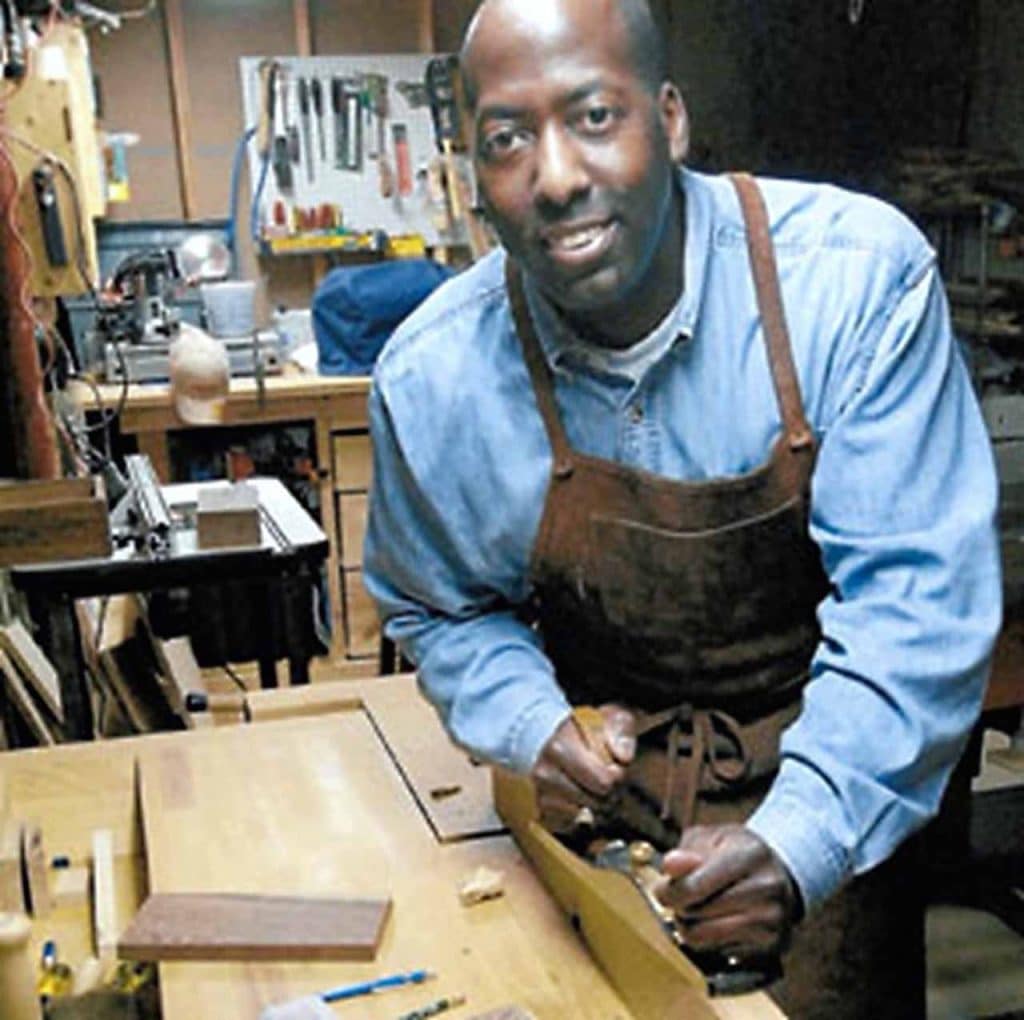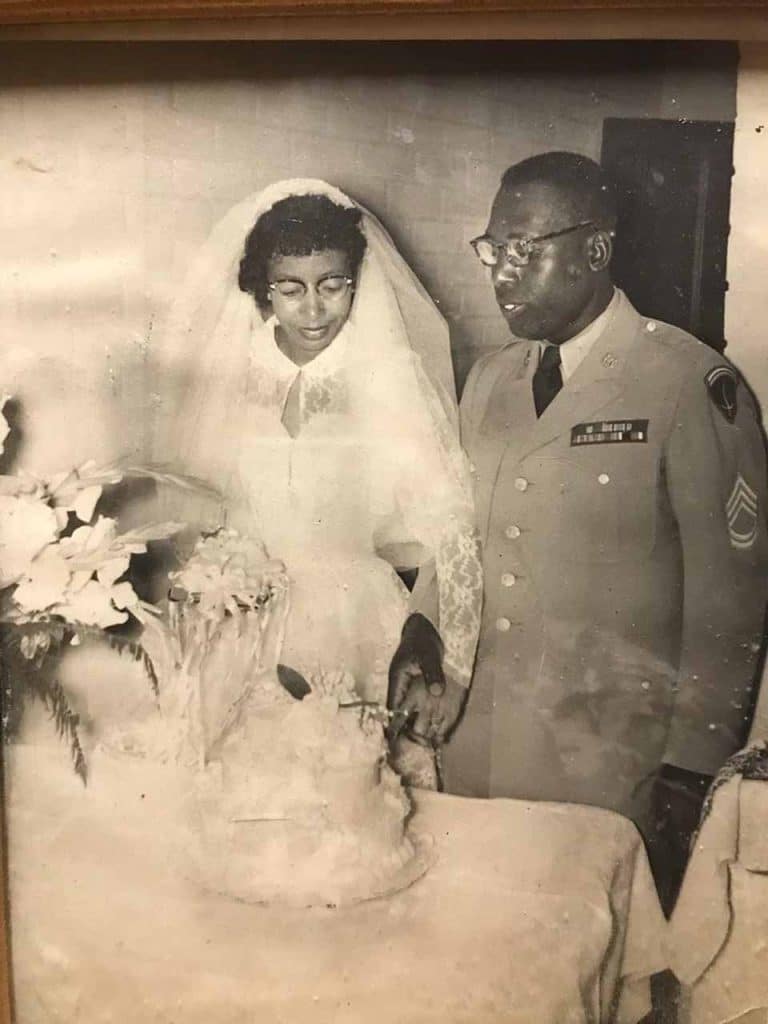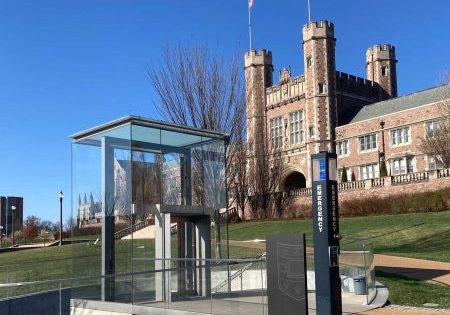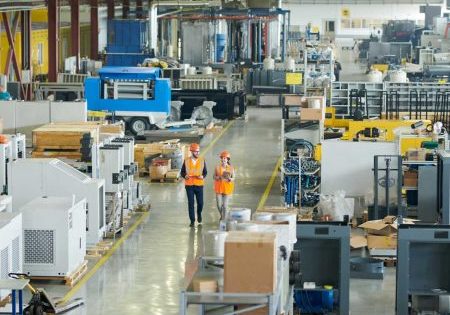Chicagoland’s Gerry Adams says goodbye to the VT industry after a 16-year career at Adams Elevator.
June 2024 was not the first time Gerry Adams lost a job due to corporate restructuring. It also happened in the 1990s when an industrial printing company — his key account — merged with another company that manufactured its own ink, making Adams’ position redundant. That prompted him to embark on a brand-new career managing a Home Depot store. An engineer by trade, he would go on to a 16-year career in vertical transportation (VT) at Chicago Schindler subsidiary Adams Elevator Equipment Co. As he had done at prior jobs, Adams rose through the ranks and was ultimately promoted to general manager (GM). Then, in June, a decision was made to consolidate Schindler’s parts business under one manager in Ohio, which eliminated Adams’ role. This time, unless he is courted by another VT company, Adams plans to retire to devote more time to his numerous hobbies: woodworking, photography, traveling and cycling, to name a few. During VT industry events throughout North America, Adams has been a familiar face at the Adams booth, always willing to pause and chat with whomever visited. “I will certainly miss seeing everyone at the shows,” he said. “It happened so fast, I didn’t even get to say goodbye to so many people.”
Growing Up in the Midwest and a Father’s Guidance
The youngest of four children (one of whom has passed away), Adams grew up in the small Midwest city of Anderson, Indiana, losing his mother when he was only 13 years old before graduating from high school there. Adams’ father was a lifelong military man who became a teacher after retiring from the U.S. Army. His mother, a homemaker, always emphasized the importance of education. When Adams was still in high school and contemplating future plans, his father weighed in and reminded him, “The one thing I always promised your mom is that I would see to it that you all finished college.”
So, it was never a matter of if he was going, but where. With input from Adams’ father, his high school drafting teacher helped guide Adams toward a career in engineering. He was always adept at math and mechanical drafting. Adams applied and was accepted to the mechanical engineering program at Purdue University in West Lafayette, Indiana. Before making this life-changing decision, Adams considered quite a different path. He recalled:
“Anderson, where I grew up, was a big General Motors town. So, while I was in high school, I was really leaning toward getting a factory job at one of the local plants and just staying in Anderson. My father, always one to direct me to think ‘long term,’ cautioned me against that plan, believing at the time that the U.S. auto industry was heading for difficult times. When I started at Purdue, I did have an opportunity to co-op at General Motors and was offered a job in town as an engineer. But again, my dad suggested I take another route. At the time, I had grown out of my ‘dumb youth’ period and actually appreciated my father’s guidance, so I remember telling him what I thought was a great plan: Go to work at General Motors, get a Corvette with the company discount and move back home so he and I could fix up the house, which had been neglected for many years.”
When the Adams kids were growing up, their father’s financial priorities were not so much on maintaining the family home, but rather on putting the kids through college — on military retirement and a teacher’s salary. “He had to admit he liked my plan and the idea of us living together, but instead suggested I move and continue to grow,” Adams said. So he did.
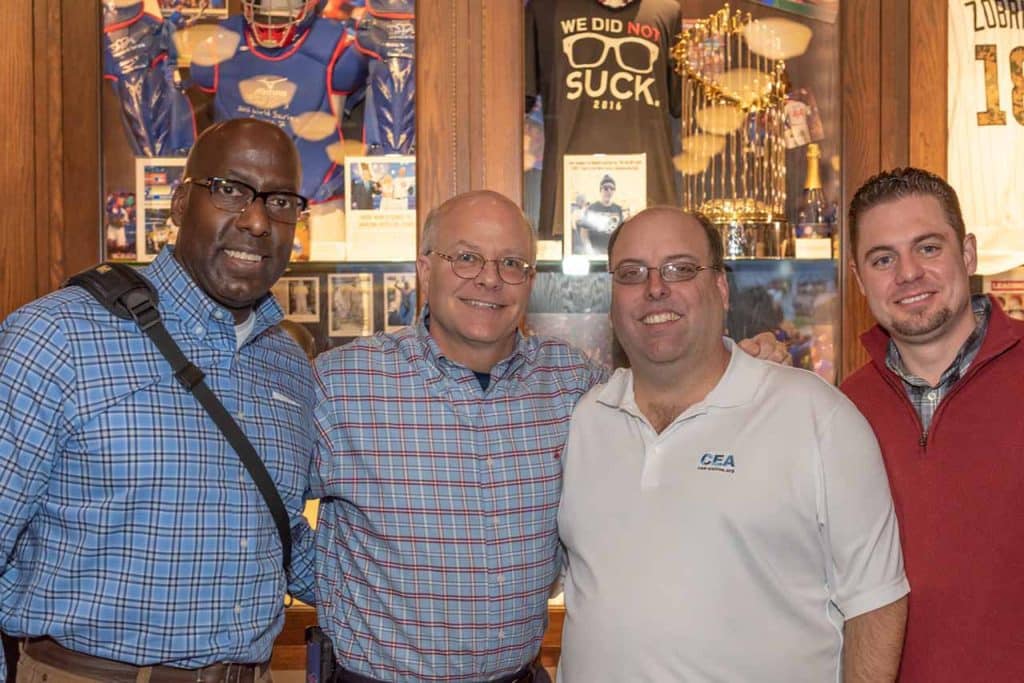
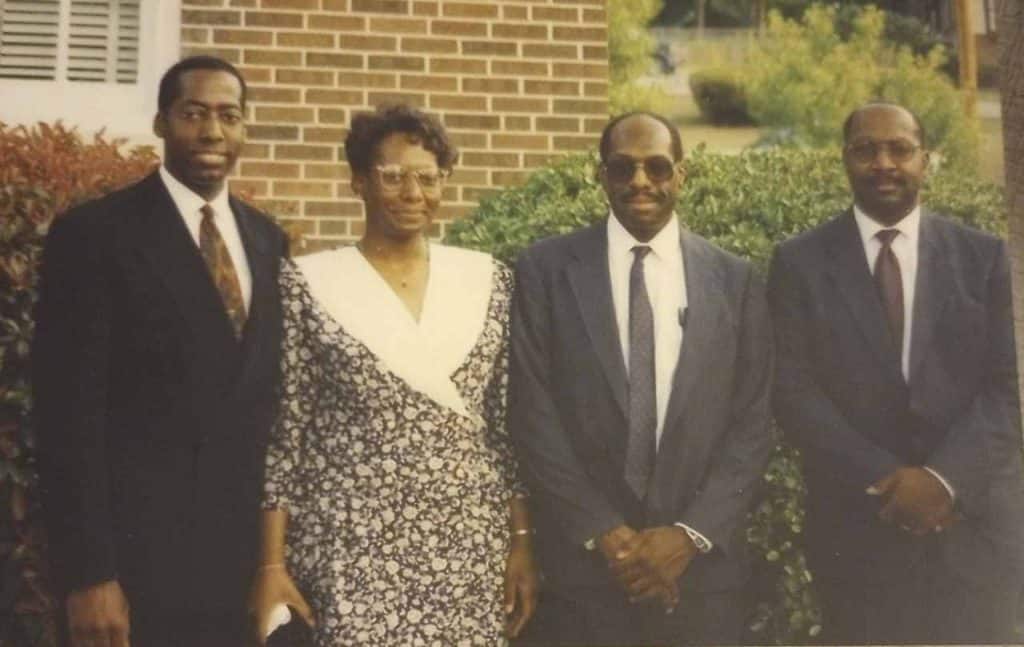

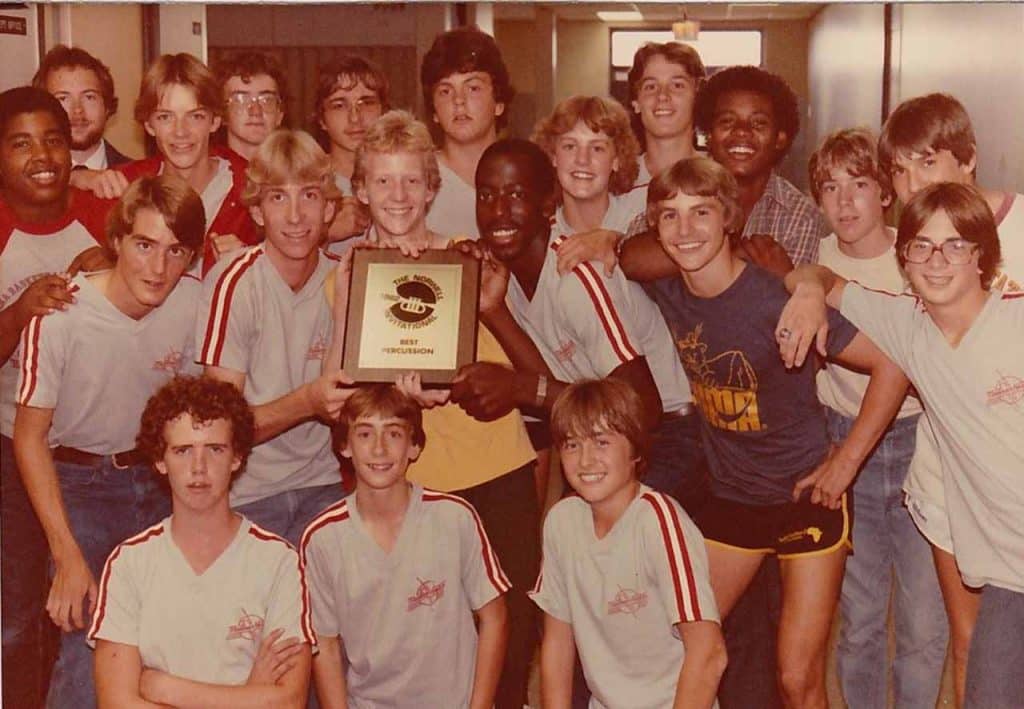
Engineering and Industrial Chemicals
Adams’ first job after earning his engineering degree in the late 1980s was at Engelhard (later purchased by BASF) in the industrial/environmental engineering department in New Jersey. He eventually transitioned to the specialty chemicals side of things, moving to California in 1993 in a new position with the company. Although an engineer, Adams had always been interested in business operations, so he returned to school to earn his MBA. With MBA in hand, Adams decided to leave Engelhard, joining Sun Chemical as branch GM for one of their industrial printing ink operations based just outside Boston that serviced the New England market.
After a few years in that position, he was promoted to a global key account position based in Chicago, where he was responsible for managing the RR Donnelly (RRD) account and sales offices in the U.S., Poland and the U.K. However, shortly after assuming that job, RRD merged with another industrial printing company that produced its own ink. “So, they got rid of Sun, and they got rid of me,” Adams said. It marked a turning point for Adams, who said:
“I was talking to one of my national account managers and was like, ‘Where are we going to go? What are we going to do?’ We all knew it was happening. I said to him, ‘You know what I’d love to do? I’d love to work for The Home Depot.’ I was starting to get into woodworking and that environment really appealed to me.”
The Home Depot and Woodworking
The idea of The Home Depot appealed to Adams, but he had never had a retail job. “I knew nothing about it,” he admits. Then, “literally on my last day driving home” from Sun Chemical to Hoffman Estates (just outside of Chicago) he got a phone call from a headhunter who told him about The Home Depot Leadership Development Program. The program was developed by then-Home Depot CEO Bob Nardelli, who sought to recruit professionals with no retail experience and train them how to run a big-box store. Long story short, Adams successfully completed the program and ended up managing a new store in Carpentersville, Illinois, part of the Chicagoland area.
Adams’ time at The Home Depot ignited his passion for woodworking. He bought a work table, a drill press and a carpenter saw, and turned his basement into a workshop. As he began to run out of space in his home for projects, he eventually turned his hobby into a small home-based business that sold custom furniture and cabinets. Most of his customers came from website advertising, as well as craft shows and word-of-mouth. Ironically, as a Home Depot employee, he did not get a discount on materials. The company had nixed that because “if they did that, all the contractors would get jobs there.” Working at both Home Depot and in his basement late into the night eventually wore on Adams, despite it being “a company where I felt extremely valued.”
— Gerry Adams on Adams Elevator
We really were like a family, where we may have had disagreements from time to time, but the love we had for each other was nonetheless apparent whenever we would get together to share a meal, talk business or come together to mourn or celebrate an event.
So, he left The Home Depot to work for Illinois Tool Works as a national sales and marketing manager for approximately one year. Then they wanted him to move to California, which he wasn’t too keen on, so he stopped working there in order to concentrate on woodworking — quite a bit of it, including trim work like crown molding, mantles, vanities, kitchen tables, chairs and beds. “I had so much work,” he said.
From his website and by working with local shop owners in Dundee, Illinois, Adams got noticed by organizers of a folk art festival held in St. Charles, Illinois, at the time. He recalled:
“They were looking for a Mission furniture maker, which was my primary style. So when they approached me about having a booth at their show, I jumped on it. I showed there for two years and had a lot of success. I would basically clear out my house into a U-Haul® trailer for the show, and whatever I sold at the show, I’d remake so I had enough extra in the house. Business was great until the market downfall of 2008. When that happened, I had several customers cancel orders and my backlog dropped considerably. In early 2008, I had two home remodeling projects of significance, after which I had not much else coming in. So, I knew I needed to find a ‘regular’ job. I answered a listing on monster.com for a business unit manager at Schindler elevator.”
A VT Career Begins
Adams knew nothing about elevators, but thought, “What the heck, I’ll apply.” Schindler ended up calling him for an interview in Niles approximately 1 h from where he lived in Hoffman Estates. After having been up most of the night before working, he threw on a suit to rush to the interview, forgetting that magnetic signs for his woodworking business were all over the outside of his truck. He pulled into a Walmart parking lot and removed them. He recalled:
“I walk in and I’m like, dead tired. I think, ‘I’m not getting this job.’ All the while, I’m thinking about all the work I have to do; not 100% there. But I had a good interview, apparently. I left with a portfolio of job interview jokes from the guy who interviewed me and a coffee mug with ‘Adams’ on it. I started to feel good about this job.”
After a few more interviews, Adams was offered the business unit manager job at Adams, joining the company in May 2008. Around 2011-2012, a decision was made to move that facility — the Schindler logistics center — to Ohio. The GM of the Niles facility at the time did not want to move to Ohio, so the decision was made for him to remain in Illinois to run the Adams operation, which began Adams’ career in sales with the company.
He decided to take this time to develop relationships in the VT industry and learn about its products while calling on service contractors and distributors across the U.S. and Canada. Along the way, he developed a lot of good friends, who he will “certainly miss seeing at industry events.”
The year 2016 would mark a major personal turning point for Adams, as that was the year he married his wife. Because he traveled so much throughout his early career, he never settled down. He met his wife, Jodee, who happened to live in the same neighborhood and had a primary care physician in the same building as Adams, through an online dating site. “Even though we were so geographically close, it took a computer to connect us,” Adams said. A year later, the couple jointly bought a home in Elgin, Illinois, where they live now.
Now that Adams is retired, he and his wife plan to travel more. They very much enjoyed a trip to Alaska for a National Geographic photography expedition and are considering doing it again. As for what he liked most about working in the VT industry, it was the many friends he made, particularly those at Adams Elevator. He said:
“We really were like a family, where we may have had disagreements from time to time, but the love we had for each other was nonetheless apparent whenever we would get together to share a meal, talk business or come together to mourn or celebrate an event. And no matter what, taking care of the customer was one thing we would always agree on.”
This Industry Profile was gleaned, in part, from an in-person interview with Adams recently conducted by ELEVATOR WORLD President T. Bruce MacKinnon.
Get more of Elevator World. Sign up for our free e-newsletter.


